Archives
now browsing by author
PAEA 2017 Conference Insights: Film making!
Collaborative Stop Motion Films with Younger Grades
Saturday October 21, 2:00pm-2:50pm in Brighton III- ACT 48 hours
Have y’all ever met Susan Liedke??? She is amazing! And the projects she leads within her pre-k classroom are inspired and inspiring. Because of the film work she does, I had faith in leading a stop motion film with my kindergarten kiddos. And…. it was aweeeesssssoooooommmmmmme! Please come and Come join myself, Leslie Grace, and Susan Liedke to learn about best practices in creating stop motion films and animations with pre-k-5th grade. And ear act 48 hours while you’re at it! Woo-hoo!
Itching to incorporate technology and stop motion animation with your lower grades? Whether you are in a choice–based or traditional classroom, learn how to manage and execute collaborative stop motion and/or time lapsed films with your youngest artists.
…
Media Arts: Teaching Film making in the Art Classroom
Saturday, October 21, 9:00 – 9:50 AM in Brighton IV- ACT 48 hours
If you teach at the secondary level, have no fear! Robb Bomboy & Cory Wilkerson will be there for ya! They will be leading a session on film making for the high school level art room, answering the question of, “How do I get started with teaching Media Arts?”
The importance of media arts literacy is exploding with the advent of smartphones and the internet. This session will provide attendees with a practical, national media arts standards–based approach to teaching film making in the art classroom. Focus will be drawn to pre–production planning, production, and post–production method for fiction and non–fiction film making. Strategies for establishing time lines and developing publication outlets will be examined.
http://www.paeaconference.org/conference-program/
PAEA 2017 Conference insights: Mentoring and Student Teaching
Are you curious about how to help another art teacher? Whether you are new to the field, or have seen many art rooms in your days, all voices are valid and have fantastic ideas to share. Here are two sessions that might interest you:
Mentoring is Art Education Leadership. Will You be my Mentor?
Sat, Oct 21, 2 pm-Act 48 -Brighton ll (room)- Lisbeth Bucci
Join the discussion! Pre-service, current teachers and retirees….Mentoring can be both informal and formal. Let’s all actively become a more positive influence and leader in art education.
What to Expect When You’re Expecting…A Student Teacher!
Sunday at 10:00 – 10:50 AM– Brighton IV- Leslie Grace, Katherine Videira, Lauren Stichter, & Christina Franko Ulliano
Have you considered hosting a student teacher but are nervous about what to expect or what your role is? Are you going into your student teaching practicum soon and want a better understanding of what might be expected of you? Perhaps you are a supervising teacher and would like to express what you look for when you observe??
Then come to this session! Let’s help each other do the best that we can in our field!
Find out about more sessions here:
http://www.paeaconference.org/conference-program/
The Art21 Experience, by Marie Elcin
Philadelphia art teacher, Marie Elcin, was one of ten art teachers from across the country to attend the Art 21 Summer Institute Workshops in New York City. What an honor for Marie, and how exciting for us to hear about her experience!! Perhaps it will inspire you to be one of the next Art21 educators? Thank you Marie for putting this blog entry together (and on such short notice!). Here in her words, Marie tells us about her Art 21 experience in NYC:
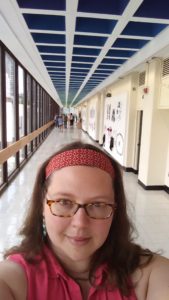 “When I attended Joe Fusaro’s session about ART21 at NAEA in New York this past March, I knew this was the year I had to go for it: apply to be an ART21 educator. The application involved writing about my viewpoints on contemporary art and how I use it in the classroom, and writing up a sample unit plan for a contemporary art experience. The fun, but challenging part of the application was filming and editing a 5 minute introductory video (https://youtu.be/D4b61PPRLvI )to explain why I wanted to be in the program (they like to see your personality and tech skills!). When the acceptance announcement came out, (https://art21.org/2017/06/06/welcome-to-our-new-art21-educators/ ) I was over the moon with excitement and anticipation, and I couldn’t wait for the school year to hurry up and finish already so I could get to New York City.
“When I attended Joe Fusaro’s session about ART21 at NAEA in New York this past March, I knew this was the year I had to go for it: apply to be an ART21 educator. The application involved writing about my viewpoints on contemporary art and how I use it in the classroom, and writing up a sample unit plan for a contemporary art experience. The fun, but challenging part of the application was filming and editing a 5 minute introductory video (https://youtu.be/D4b61PPRLvI )to explain why I wanted to be in the program (they like to see your personality and tech skills!). When the acceptance announcement came out, (https://art21.org/2017/06/06/welcome-to-our-new-art21-educators/ ) I was over the moon with excitement and anticipation, and I couldn’t wait for the school year to hurry up and finish already so I could get to New York City.
Left: Leonardo Drew’s Studio
Right: Selfie with Calder at the Whitney
After traveling up to Manhattan on the 4th of July, we had a whirlwind week through the Whitney Museum of Art for workshops to Brooklyn for a visit to the studio of Leonardo Drew and Dieudonne for a paper-pulp painting workshop, to the Museum of Natural History for an institutional/curatorial critique with artist David Brooks, to a New York Public High School classroom to brainstorm with teens, and to the Kitchen for a performance by artist Aki Sasamoto.
Left: David Brooks and Joe Fusaro at the Natural History Museum
Right: Dieudonne Paper Pulp Painting Workshop
Left: Open Spaces Brainstorm
Right: Glen Ligon at Harlem Studios Museum
Along the way we had time to explore NYC museums on our own (hello Harlem Studio Museum!) and time to work and process the experience to start developing our own resources to use in the classroom. It was the best professional development I’ve ever had because we got to see art, meet artists, make art, and learn best practice from our peers through hands-on learning- not boring lecture.
 I thought when I applied to the program that it would be just a one-year experience. What I’ve really become a part of is a community of educators around the country who are dedicated to ongoing professional development and collaboration with the focus on how to use contemporary art in the classroom. Not only was my 2017 YEAR 7 cohort of 10 educators from around the country attending the institute, but nearly 20 other educators joined us from past cohorts to introduce us to the practice of being an ART21 educator. Throughout the next year I’ll be collaborating intensely with members of my cohort and our mentors, but once an ART21 educator, always an ART21 educator.
I thought when I applied to the program that it would be just a one-year experience. What I’ve really become a part of is a community of educators around the country who are dedicated to ongoing professional development and collaboration with the focus on how to use contemporary art in the classroom. Not only was my 2017 YEAR 7 cohort of 10 educators from around the country attending the institute, but nearly 20 other educators joined us from past cohorts to introduce us to the practice of being an ART21 educator. Throughout the next year I’ll be collaborating intensely with members of my cohort and our mentors, but once an ART21 educator, always an ART21 educator.
I’m still figuring out what that will mean to me moving forward. The goal is to think about how to make learning in the art room inquiry based and not merely expressive. Contemporary artists research and explore ideas and questions that drive their practice- so students should be working in similar ways. How can we get students to ask questions and be motivated to find out the answers or experiment with ideas and artistic processes? How can we create dialogue and reflection in the classroom when those big questions lead to difficult conversations? How can we encourage innovation and creativity among our students?
Fortunately, there is a wealth of resources available on the ART21 website to use as inspiration. Check out the Learning Library page, which has questions and prompts with related artists to look at:
https://art21.org/for-educators/tools-for-teaching/learning-library/?filter-media-material=The educator guides that accompany each season are all available as pdfs: https://art21.org/for-educators/tools-for-teaching/guides/educators-guides/
And now that the website has been revamped, each video is cross-indexed so you can see everything about a single artist that is available, including videos, image libraries, and articles.
Finally, ART21 puts out a monthly online magazine with info about artists and increasingly, articles by ART21 educators about how they are implementing contemporary art-based curriculum in their classrooms. http://magazine.art21.org/
End of the 2016/2017 School Year
Hello PAEA folks and the greater community.
Christina, Sue, and I have divided up the months for blogging. June is mine, and I have been going back and forth on what I wanted to post about. School art shows?? Demonstration teaching lessons when applying for jobs?? I just could not gather enough info in time to talk about either.
So… I am sitting here at my desk, with my work computer (before I have to turn it in for the summer), and I have finished packing my room up…. I have put this blog off long enough. Time to commit.
I guess what’s really on my mind is what other art teachers have to do at the end of the school year to pack up their rooms.
To be frank, I am not even sure what I am supposed to do, but I know it’s best to shove as much as I can in my closet and cover up my shelves that I leave stuff on. Every year I am told something different for what to do with my room, so I guess I have decided to go with the “ask for forgiveness later” approach.
Here is what I do: Pack up all my iPads. They go in my closet first, as I want to make them the hardest to get to. Then, anything on wheels I start loading up, and roll in to the closet to fit like a game of art room tetris. I clear the window sills and make sure there are no “loose” art supplies on the shelves, floors, or any surface. From what I understand, the main thing that happens in my room over the summer is they mop and wax. I have been told I can keep my posters up. So I do. I know other rooms take them down, because apparently their walls get cleaned. I have ceramic tile walls, and I don’t think they much intend on cleaning those.
I stack my large tables on top of each other, so their is less to move around. Other teachers have to put their desks/tables/chairs in the hallway outside their classrooms. I did not have to do it last year, so I am not doing it this year. And plus, the other teachers get help from other janitors to do that. I don’t, so I won’t. (Not that I am not capable. I am totally like super strong. It’s weird how strong I can be, yet how frail I might look. lol) All my small desks/tables and stools are stacked and shoved into my giant closet.
I do not empty my desk. I am not worried about that. And no one told me I need to.
I cover up the smart board to protect it from …dust? I guess I should probably put a trashbag over the projector then… but I don’t have one. And asking for one will open a whole world of “what will you do for me” and I don’t want to become indebted for a trash bag. If I had the foresight yesterday, I would have packed one from home for today.
Obviously, all art is taken down from all over the school. Most of it I return, but some work from the last quarter I keep to display at the beginning of the school year so the halls are bright when the kids return. Some work I also hang on to for art shows or competitions at the beginning of the year that I might want to enter them in.
As the art teachers in our school, we have wayyyyy more stuff to move around, organize, and pack up than most teachers. And then to unpack and reorganize it all in the fall… in between all the meetings we are required to attend.. ugh! This is why I use the “ask forgiveness later” approach. There is a lot expected of us, and the rebel in me just wants to do what will make life easier in the fall upon return.
Soooo, I guess that’s it. What do you have to do? Is there concrete information given to you from your administration? Do you have to take stuff home?? (I sure hope not!)
Anyway, I hope y’all beautiful art teachers out there have a fantastic summer. This has personally been a tough year in my school and classroom, but I only see great things for the future. So when I unpack my closet cart by cart, and box by box at the beginning of the school year, I will think back to how my my school has achieved, and how much my art room has grown and will continue to grow.
Stay tuned for the July blog post from Sue Liedke which will be all about the PAEA trip to Cuba!! I can’t wait to hear all about it!!
Organization in the Art Room
The following query was posted to our PAEA Facebook Page. Members chimed in, and their responses are below for your benefit and organizational enjoyment! I’m getting goose pimples already thinking about the wonderful ways to organize!!!!
“Please share some of your unique and successful classroom organizational devices/structures. How do you store 2-D work? How do you store 3-D work? What do you feel is necessary to always have on the table? What are your art room life hacks? Etc…”
Marita Fitzpatrick of Bodine High School in Philadelphia suggests: “For small 3d (our recent stuffed toys): I have a copy paper box for each class. The students put their work in manila envelopes, write their names on them and I have one person from each table collect the envelopes and return them to the box. For 2d, each table puts their work in folders marked w the table color (tables are color-coded) and that goes in the copy paper box. This box is marked, period 1, period 2, etc. I have a closet of shelves for ceramics and each kid gets a shoe box to store their stuff in. It keeps the others from touching the work and breaking it. Students wrap their work in dry cleaning plastic to keep it moist. I regularly have kids empty the drying rack, sort the work and put it in the copy paper boxes. I keep nothing on the tables, because the stuff disappears and they put trash in the containers. I store markers and colored pencils in plastic pencil boxes on open shelves in the room and number them. I never look at the numbers or count them, but the kids think I do, so nothing disappears. On those shelves, I also have scissors and other frequently used supplies that students have open access to.”
Alison Elizabeth of Lancaster, PA shares her planning strategy: “Each class I teach is a different colored sticky note. This calendar is glued into the front of my sketchbook (which I use for all of my demos, meeting notes, and conference notes). It’s all with me and ready to go at all times.”
Linda Keels suggests making the investment in folding tables from the local hardware store (she uses 3) for about $30-40 a piece—there is room to hold up to 6 classes worth of work (she teaches 12) which forces her to keep it moving and the kids to stay on track for 3-D things.
Eleanor A-Evans For stores 3D work, such as clay sculptures and paper mache on ‘mobile pan racks’ (like the one in the photo- thanking Google image search). Depending on your supplies resources, the cost on the average is under $90, and can be the solution for saving space and stowing away the masterpieces!
Julie Schedin share with us how her students creatively tackle this issue with a little design thinking! “My Crafts class yarn bombs a coat hanger. They own the airspace above their seat, and hang all work (basket weavings, etc) from the coat hanger in the drop ceiling. The room develops a type of “rainforest canopy” but a least we can keep 3d projects organized and handy.”
Judi Treffinger of Carlisle, and formerly the Carlisle Area School districts has an idea for yarn storage! “You know all those large gallon sized plastic food containers your cafeteria gets when they purchase food? I duct tape then together with the open sides up and use them to store and separate skeins of yarn. They can sit on a counter top, or stash neatly in a cupboard with open ends facing out- all colors are visible and yarn doesn’t get tangled!”
Moore College of Art and Design Alumni, Autumn Rae suggests art teachers to follow her Instagram: mrsdow_artroom where shes posts things about classroom display and specific grade levels k-5 . She posts lots of classroom things about organization what materials I use.
Autumn also shares:
“- Container store bins are the best!
– It needs to be organized and colorful for me to function. I cannot stand messes or piles.
– I keep messes at the middle table whenever possible.
– I use my drying rack when I can but I actually love rolling out a sheet of paper and either working on the floor with the kiddos or having them dry their work flat and organized on a sheet of paper. Work great for printmaking each student gets a row for all their prints.
– All my notes are on my Instagram that describe each photo and what it relates to classroom, display, or a grade level.”
Autumn teaches art to 881 students k-5 students. She describes, “We are an emotional support school with a high ESL population and also a title 1 school. I have put lots of my own money into my class but once the upfront cost is paid off then I have all these organizational systems in place for years to come. I need everything organized like I said but also kid friendly. I have created two closets for classroom teachers and stock it at the beginning of the year so they don’t ask me for supplies I need for my own classes.”
Woah Autumn! Thanks for all of that!!! Loooooove the colors!!! And there is no denying where those pencils came from!!
Daisy Konowal uses a system of table color folders. 2 sets- one for work in progress and one completed work. Also, Daisy uses sheets/fabric/blankets to cover her shelves to limit access to shelves.
Sunnylee Mowery of Philadelphia’s Greenfield Public School strives to make my classroom organization methods so easy a kid can do it! Each table is color coded and this helpful chart rotates at the start of each week so everyone knows who is in charge of what. The artists are expected to pass out work and supplies, monitor volume, tidy table bins and floors, and even call each other to line at the end of class.
Sunnylee has clearly labeled bins with teacher name are organized by grade level. All supplies that accompany the project are placed above in their grade section.
Sunny poses the question, “How do students monitor sound, you ask? The volume giro migrates to the table in charge of volume each week. If the room gets too noisy, the students “ring” the giro to signal to the class to quiet down. If we get 3 giro rings, we lose the privilege to talk.”Click Here for a link to the video of the magical giro sounds that have the power to quiet students!
Kim Horan Colasante, art teacher in the School District of Philadelphia shares, “My routine is very much the same as Sunny’s. Each table has a color, table folders or student folders are matched to the table they sit at. I have a job chart, students give out folders, supplies, paint patrol, and floor sweepers. Jobs rotate weekly according to table colors. Supplies are located in front of the room and Barney’s Cleanup song plays at the end of every class 10 minutes to go. The students know to stop, put their work away and do their jobs. The ones that are done sing to barney. (I teach middle school) they dab to it also. It only plays for a minute so work must be away by the time song is done. then folders are collected and floors swept etc. 3D work is done a bit differently due to lack of space in classroom. When Barney plays each table brings me their 3d work and I place it in a special section so that they may retrieve it the following day. Clay is kept in large Rubbermaid containers until in it ready for drying.”
What do you do in your classroom?????
UArts and Design Thinking
A couple of Saturdays ago I attended the Alumni and Friends workshop series offered at University of the Arts. It was a fantastic learning day overall, even though I was battling some serious post nasal drip (TMI?)…
I was most intrigued with the keynote when learning about the Design Lab School in Delaware, and how they are 1 in 10 schools to have been awarded a prestigious Super School grant, which you can read about in the below article.
https://outandaboutnow.com/super-school/
I have been acclimating myself to design thinking for a few years now. I am a part of the Design Issues Group in the NAEA (you should be too!) and I find a lot of inspiration in this way of thinking. And truthfully, it’s not far off from what we already do, but there seems to more more intentional thought and focus that goes into the process for problem solving design issues.
But back to the keynote… This blurb taken from the UArts event page gives a description of the talk:
“Can Design Thinking Transform Schools in the 21st Century?
Design Thinking is a way to bring K-12 schools into the 21st century. Schools haven’t changed much from the factory model developed for efficiency a century ago. We need to take education from the Model T to the Tesla. Talk with design leaders from the $100 million XQ Super School award winners and become part of the conversation about transforming education through Design Thinking. “
A quote they shared at the beginning of the keynote that really resonated with me:
“You never change things by fighting the existing reality.
To change something, build a new model that makes the existing model obsolete.”― R. Buckminster Fuller
…That is what Design Lab has aimed to do…
So, Design Lab is not specifically an art school. They are a school that engages students in design thinking to every aspect of their learning in the school. They engage students in visual communication making it a more universal way of learning, and use the design thinking process to evolve students ideas into amazing results.
The process is similar to the Scientific Method, with the exception that the Scientific Method tests the “known”. With Design thinking, one is solving for the unknown, or the X-quotient (XQ). It involves a process to get to a result we do not know about… a “what if??”
The leaders of the school spoke of Meliorism, that is, the belief that the world can be made better through human effort. The intention of these super schools is to build a school model that does not fight the existing reality of how schools currently operate, but to build a new model which could be applicable to schools across the country. To me this is absolutely revolutionary. I got goosebumps thinking about the progress and impact we could make in our students lives… but I also feel concern.
How do we create this change? How could a new model of schooling and learning get effectively implemented in our schools and districts without damaging the systems that are already in place. As an advocate for public schools, I do feel some apprehension here. I feel there are larger conversations that need to take place regarding this. But I also see the promise in this sort of system… I just don’t know how we evolve without leaving some people or students at a disadvantage. How could we implement a model like this to work effectively in our public schools? Is it possible? I am just spit balling questions here now? I am by no means an expert on this? Nor am I saying this is the answer to all our education issues. I just see this as an innovation in education, and I wonder, what next?
What do you think? What questions does this bring up for you? Do you think this is a sustainable idea?
I do hope my line of thought is clear in this post. It’s a heavy topic. I am concerned for where education is headed in our country and I suppose I am searching for hope, for answers, and for direction.
Last lil bit here… I was made aware of a book I plan to read next… maybe you will be interested in it also Daniel Pink’s A Whole New Mind.
Just need to finish this book first…
A taste of Tyler
FYI art teachers:
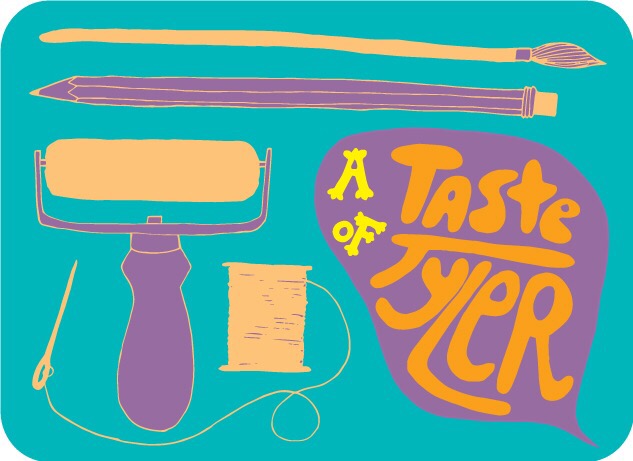 EARLY BIRD REGISTRATION ENDS On FEB 15, 2017
EARLY BIRD REGISTRATION ENDS On FEB 15, 2017
This is the link to the Tyler Web site with all the info.
https://tyler.temple.edu/taste-tyler
Workshops are:
CHOICE BASED LEARNING IN THE ART ROOM
BUILDING BASIC BOOKS
THE ART OF PLAY
CONVERSATIONAL ART
AN OLD DOG…NEW TRICKS: TEACHING 5TH CENTURY PRINTMAKING PROCESSES WITH 21ST CENTURY TOOLS
BEAD COLLAGE
PATA student art in Harrisburg
Hey y’all… please check out the Philadelphia Art Teachers Alliance post and photos of their students’ art show at the PDE Honors Suite in Harrisburg:
http://philadelphiaartteachersalliance.com/blog/hey-harrisburg
http://philadelphiaartteachersalliance.com/pata-art-in-harrisburg
[youtube]VwHa5rHQmxc[/youtube]
Comics in the Art Room with guest blogger Sunnylee!
Hey folks! Guest blogger and School District of Philadelphia Art Teacher, Sunnylee Mowery here! Last month, thanks to the generous support of The Kennedy Center’s VSA (Very Special Artists) Division, I got to lead a workshop on using comics in the art classroom at Moore College of Art & Design’s “Art Education for Special Populations Symposium.” The 2016 symposium was organized around idea of “narrative” so I decided to design a workshop that explored the hip, new trend of teachers using comics as a means to document, digest, and reflect upon their day-to-day adventures in the classroom. Comics, themselves can be a great way to help your younger artists spark dialogue or to engage with complex information. Having a bunch of black “comic starters” available in your classroom is a wonderful way to help you find out more about your students’ personal narrative or interior motivations 9 (Student “Day in the Life” comic pictured below).
If you’re new to comics and not sure where to begin, one super easy way to bring comics into your art room is to create a small comics library that students can explore a variety comic formats and styles. Personally, I started small a few years ago with a collection of five, and I try to add one or two books to the collection each year. Below are my top ten picks of kid-friendly comics!
- “Drama” by Raina Telgemeier
- “American Born Chinese” by Gene Luen Yang
- “Persepolis” by Marhane Satrapi
- “Ms. Marvel Volume 1: No Normal” by G. Willow Wilson
- “Anya’s Ghost” by Vera Brosgol
- “Miles Morales: Ultimate Spider-Man Collection Book 1” by Brian Michael Bendis and Sara Pichelli
- “Smile” by Raina Telgemeier
- “The Odyssey: A Graphic Novel by Gareth Hinds
- “A Wrinkle in Time: The Graphic Novel” Adapted and Illustrated by Hope Larson
- “The Legend of Bold Riley: Warp and Weft” by Leia Weathington & Zack Giallongo
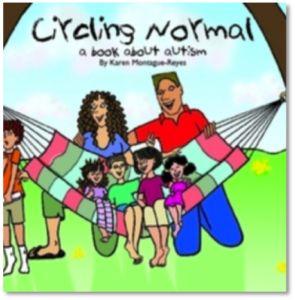 The workshop also touched on how comics can be a really effective way to create an inclusive classroom. There are a growing number of authors and illustrators who identify with special needs who are using comics as a way to convey their unique experience. There are several great titles, such as “The Ride Together” by Paul & Judy Karasik or “Circling Normal” by Karen Montague-Reyes, that are penned by authors who are on the Autistic Spectrum. Or “Epileptic” by David B., a just published graphic memoir about two brothers journey of growing up together and dealing with the life-altering symptoms of Epilepsy.
The workshop also touched on how comics can be a really effective way to create an inclusive classroom. There are a growing number of authors and illustrators who identify with special needs who are using comics as a way to convey their unique experience. There are several great titles, such as “The Ride Together” by Paul & Judy Karasik or “Circling Normal” by Karen Montague-Reyes, that are penned by authors who are on the Autistic Spectrum. Or “Epileptic” by David B., a just published graphic memoir about two brothers journey of growing up together and dealing with the life-altering symptoms of Epilepsy.
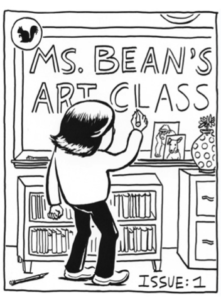 The second part of my workshop highlighted the work of art teachers producing original comics about their classrooms. Let’s face it, people, our art rooms are exciting places were innovation, ingenuity, hilarity, epiphany transpire each day! If this genre sounds interesting to you, I highly recommend checking out Ms. Bean’s Art Class, created by Massachusetts-based high school art teacher, Cara Bean. Her work is so beautifully done and she absolutely nails the art teacher experience with humor and grace! I would also be remised, if I did not give a shout out to the web-based comic, Supertizer!, created by Philly’s own Peter Coyle. His work is edgy, real, gut-busting and has inspired me to get my pencil out and make a comic for myself each week!
The second part of my workshop highlighted the work of art teachers producing original comics about their classrooms. Let’s face it, people, our art rooms are exciting places were innovation, ingenuity, hilarity, epiphany transpire each day! If this genre sounds interesting to you, I highly recommend checking out Ms. Bean’s Art Class, created by Massachusetts-based high school art teacher, Cara Bean. Her work is so beautifully done and she absolutely nails the art teacher experience with humor and grace! I would also be remised, if I did not give a shout out to the web-based comic, Supertizer!, created by Philly’s own Peter Coyle. His work is edgy, real, gut-busting and has inspired me to get my pencil out and make a comic for myself each week!
During the final part of my workshop, participants set to work designing their own “jam comic.” A jam comic is a comic created by more than one artist. Participants were asked to write down their greatest fear as a first year teacher on the top of the paper. The next step was to pass the paper to someone else at their table, who was charged with the task of illustrating this fear in comic form, and for extra points, resolving the conflict in a creative way. I got this idea from a blog post created by Jarod Rosello, a PhD student in curriculum and instruction at Pennsylvania State University.
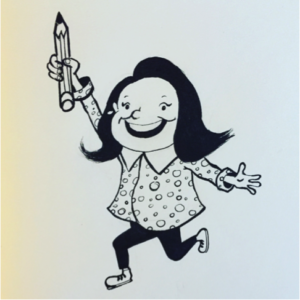 It was interesting to see such universality in the fears that were documented. Several participants confessed fears of the class running wild and becoming unmanageable, many of the comics focused on a fear of one’s “teacher voice” not commanding attention or betraying internal fears. Other teacher comics sited awkward observations, forgotten lesson plans, and even accidental risqué art exposure! If you’re an art teacher looking for a way to distress and laugh at yourself in good fun, pick up your micron and share the story of your classroom! You know it’s way too goo to just keep to yourself. 😉
It was interesting to see such universality in the fears that were documented. Several participants confessed fears of the class running wild and becoming unmanageable, many of the comics focused on a fear of one’s “teacher voice” not commanding attention or betraying internal fears. Other teacher comics sited awkward observations, forgotten lesson plans, and even accidental risqué art exposure! If you’re an art teacher looking for a way to distress and laugh at yourself in good fun, pick up your micron and share the story of your classroom! You know it’s way too goo to just keep to yourself. 😉
Signing off,
Sunnylee Mowery
PAEA YAM flag design
Hey there everyone! Did you know that flag designs for youth art month are due December 2nd (postmarked)?? Do you know about the flag designs?? If not, please allow me to share some information.
First off, I will direct you to the PAEA webpage that not only has info on the flag design but also YAM in general. (It’s in March BTW.) http://paeablog.org/opportunities-for-students/youth-art-month/
On the webpage you will find a lesson plan for the flag design, a template, the label, and a planning packet. That should make your life easier, right?! (PS. Click the hyperlinked words to go straight to the document.)
This information is taken directly from the flag design contest information flyer:
“This year there is a nationwide event planned for Youth Art Month – School Flags across the U.S. Flying High. Schools throughout the United States will hold flag design competitions. Each state will select a design which will be made into a 3’ x 5’ flag and flown at the National Art Education Association Convention. Winning designs will be honored at the Youth Art Month Reception in Harrisburg in March and winners will receive prizes! Every art teacher is encouraged to involve your students, from Kindergarten through Grade 12, in designing a YAM flag. You may approach it with your students in any creative way you would like. Please send designs to Suzanne Pagel, Youth Art Month Co-Chair for Pennsylvania. Read all directions and specifications carefully!” http://paeablog.org/wp-content/uploads/2015/04/2016-2017-YAM-Flag-Design-Information.pdf

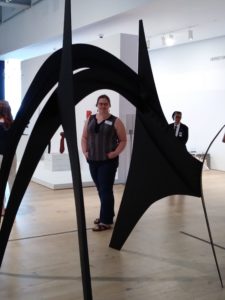
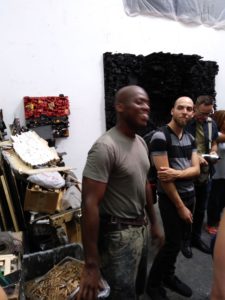
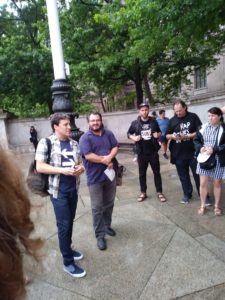
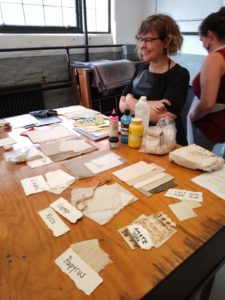
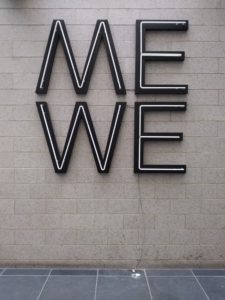
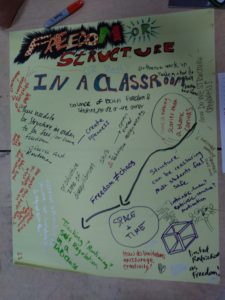
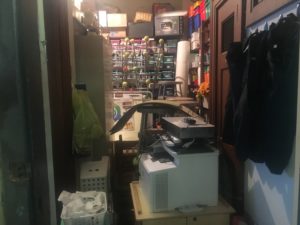
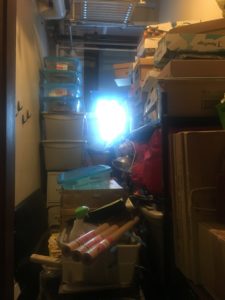
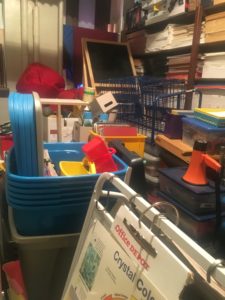
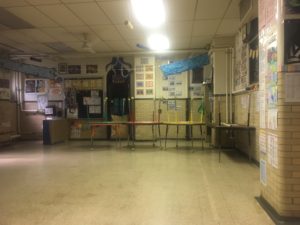
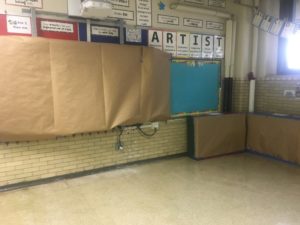
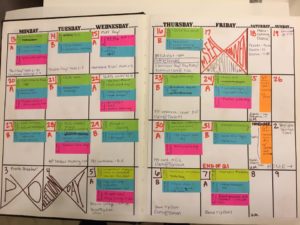
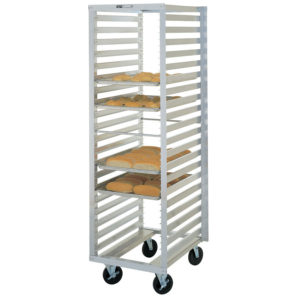

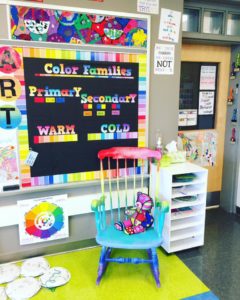
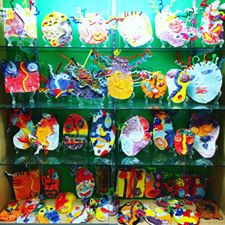
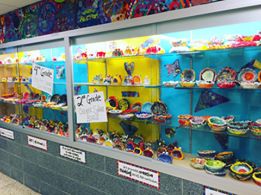
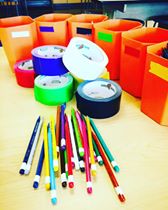
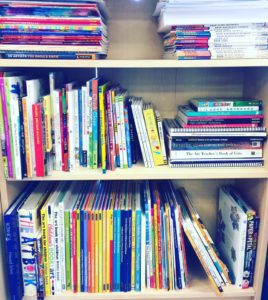
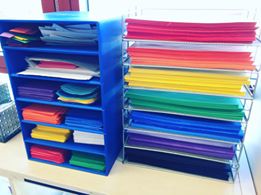
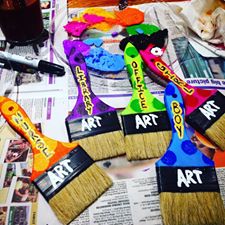
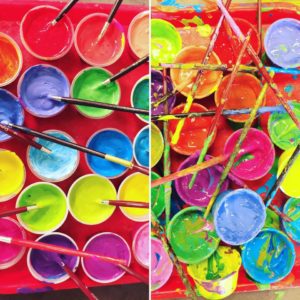
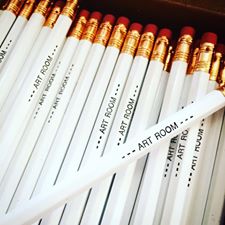
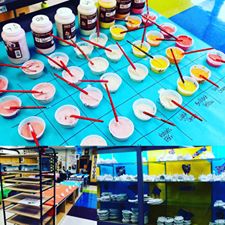
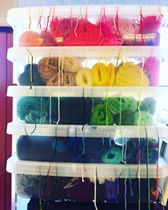
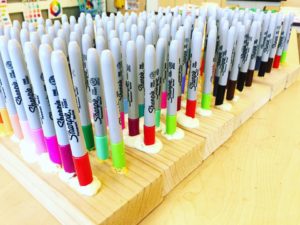

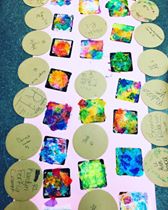

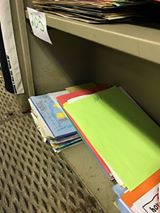
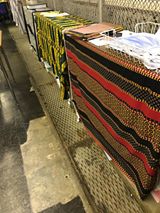
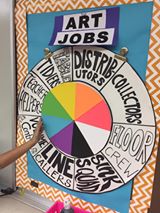
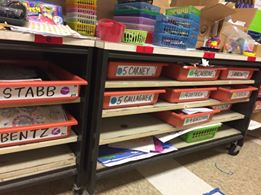
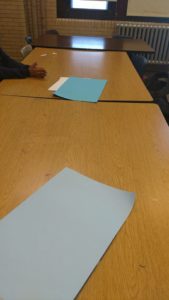
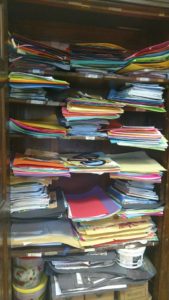
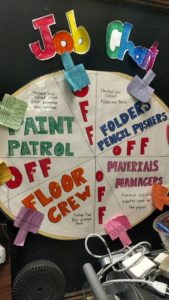
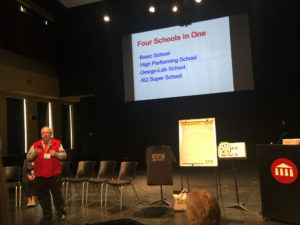
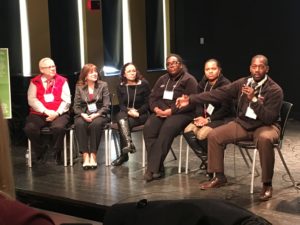


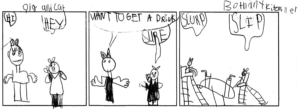
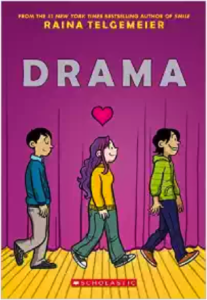


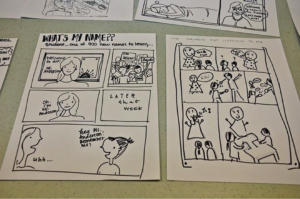
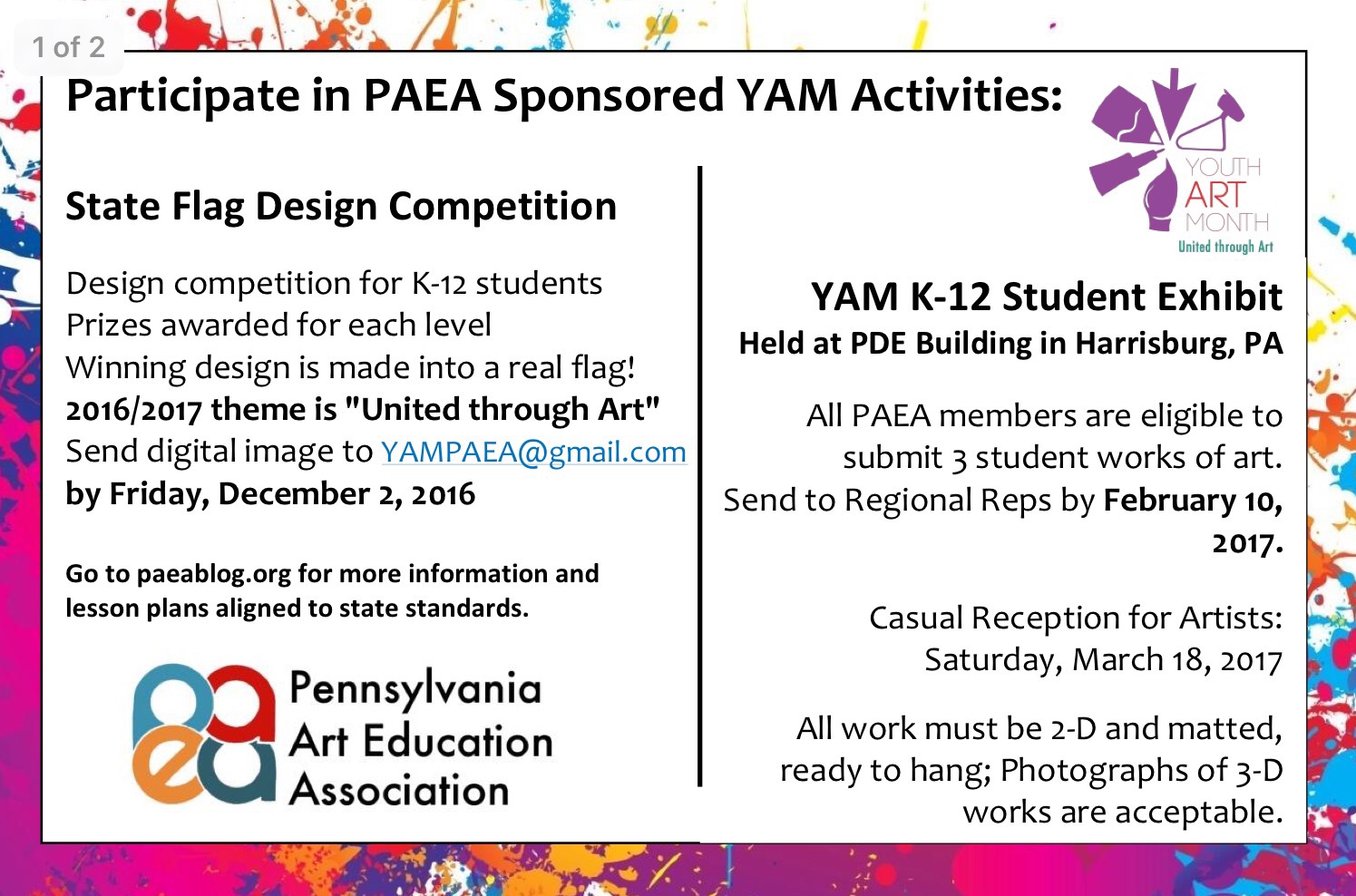
 D5 Creation
D5 Creation